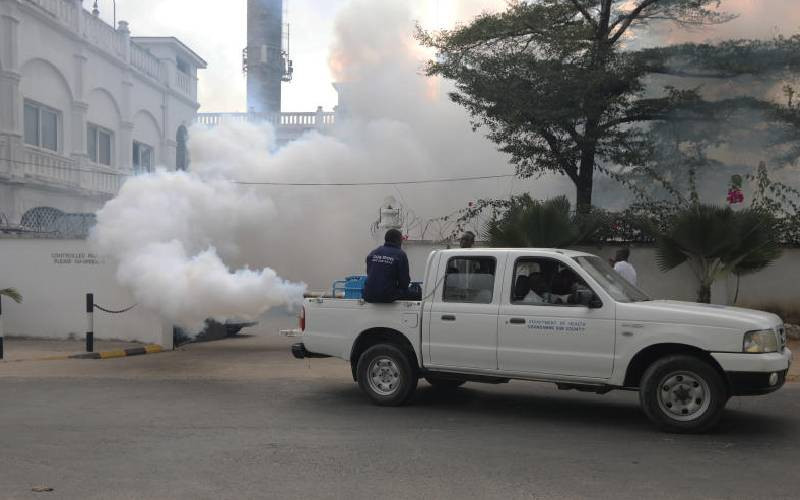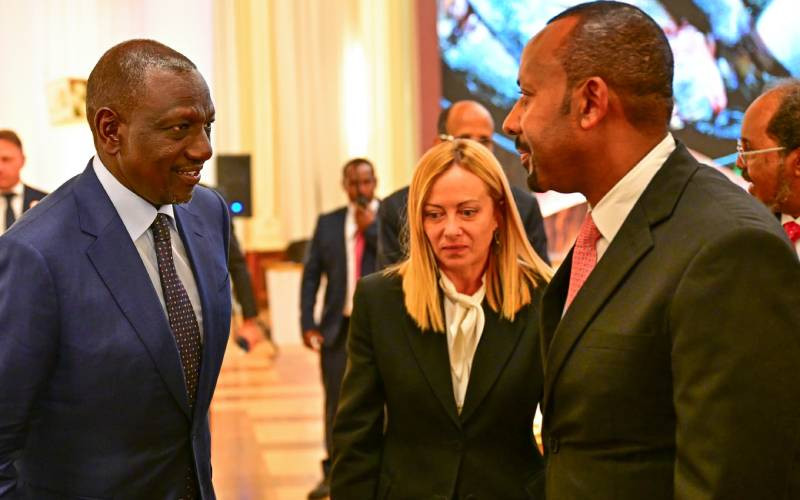
The World Health Organisation (WHO) has warned of a major Chikungunya virus outbreak.
WHO cautioned that the mosquito-borne disease is likely to sweep across the globe, as new outbreaks linked to the Indian Ocean region spread to Europe and other continents.
The alert comes as Kenya grapples with an outbreak of the disease in Mombasa County,.
At least 5.5 billion people living in 119 countries are at risk of acquiring the virus, which presents with joint pain, high fever and long-term disability.
Diana Rojas Alvarez, the WHO’s team lead on arboviruses, urged countries to take swift action to prevent the spread of Chikungunya.
“Around 5.5 billion people live at risk of this mosquito-borne virus. It could cause widespread outbreaks and put immense pressure on health systems. Its symptoms are mostly acute, including high fever, debilitating joint pain, and fatigue,” Dr Alvarez said during a press briefing in Geneva.
She noted that up to 40 per cent of those affected by Chikungunya could develop long-lasting disabilities that persist for months or even years — and, in rare cases, the illness can be fatal.
Alvarez said that about 20 years ago, there was a major Chikungunya outbreak which swept across the Indian Ocean, affecting almost half a million people, and currently WHO is seeing the same pattern re-emerge.
In the past, she said the virus affected completely healthy people and impacted the joints, hands and feet, meaning people could not hold a pen or cook; it had a huge impact on their quality of life.
“WHO is raising the alarm early to allow countries to prepare and avoid large outbreaks,” warned the official.
According to the official, around one third of the population of La Réunion is currently estimated to be infected with Chikungunya.
There have been transmissions occurring in Southeast Asia, Bangladesh, and India, as well as cases reported in Europe.
Last week, cases were also reported in France and Italy.
“WHO is calling for urgent action to prevent history from repeating itself. It is important to bring cases under control as soon as possible and limit the number affected. WHO is supporting member states in developing their lab diagnostics, training staff, strengthening the healthcare system, and scaling up surveillance to track and control outbreaks,” said Alvarez.
Stay informed. Subscribe to our newsletter
Chikungunya is a viral disease caused by the Chikungunya virus, which is transmitted to humans through the bite of infected mosquitoes.
The illness is marked by fever and severe joint pain, often debilitating and sometimes prolonged.
Other symptoms include joint swelling, muscle pain, headache, nausea, fatigue, and rash.
According to WHO, Chikungunya symptoms are often similar to those of dengue and Zika, making misdiagnosis common and complicating efforts to accurately determine the number of infections.
Most patients recover fully from the infection, but occasional cases of eye, heart, and neurological complications have been reported.
People at the extremes of age are at the highest risk of severe disease — including newborns infected during delivery or bitten by infected mosquitoes shortly after birth, and older adults with underlying health conditions.
Patients with severe disease often require hospitalisation due to the risk of organ damage and, in rare cases death.
There are two Chikungunya vaccines available, but they are mostly used only as travellers’ vaccines.
With the anticipated outbreaks, WHO is closely monitoring the situation of Chikungunya to inform recommendations which will be coming out soon.
WHO is aiming to raise awareness of the virus to help people protect themselves from acquiring it.
Kenya is among the countries grappling to contain the disease, which is endemic in Mombasa, along the Indian Ocean region of the country.
Other countries along the coastal region reporting the virus include Somalia, Madagascar and India.
Last month, the Department of Health Services in Mombasa launched an intensified vector control campaign focused on disrupting the life cycle of mosquitoes, in the wake of widespread cases of Chikungunya in the county.







